
Fundamentals
The spirit of Community Influence, when we speak of it in the context of textured hair, touches upon the fundamental truth that human beings are inherently communal. We seek connection, and in those shared spaces, whether physical or digital, our perceptions, practices, and even our innermost convictions about self are shaped. At its simplest, Community Influence describes the profound impact a collective group wields over the individual’s choices, beliefs, and way of being. This reach extends far beyond mere peer pressure; it encompasses a complex web of shared values, historical narratives, and collective experiences that subtly or overtly guide our actions.
Think of it as the air we breathe within a shared cultural sphere, often invisible yet always present, constantly affecting our personal atmosphere. In this understanding, Community Influence is not a concept divorced from the everyday, but rather an omnipresent force in our lives, shaping our approach to everything from daily rituals to monumental decisions.
Consider the daily rhythms of life in any given neighborhood or circle of cherished kin. These intimate groups, these communities, often guide choices, particularly regarding personal presentation and what is deemed worthy of respect or admiration. The influence flows from shared understandings and the deep roots of collective memory. This power is not always a top-down imposition; it grows organically from the relationships that bind us, from the conversations held in trusted spaces, and from the stories passed down through generations.
To truly comprehend this fundamental aspect is to recognize how our social surroundings, the people with whom we interact most intimately, sculpt our actions and perceptions. Understanding its core elements is a pathway to appreciating how traditional practices endure and how new expressions of identity come into being.
Community Influence is the profound collective power to shape individual perceptions and practices within a shared cultural context, especially significant in the journey of textured hair.
The meaning of Community Influence in this foundational sense is tied to its role in cultivating a sense of belonging and identity. Individuals discover a sense of personal relatedness within a group, a feeling of mattering, of making a meaningful difference to the collective, and of the group holding significance for its members. This reciprocal relationship ensures that members’ needs find fulfillment through their engagement with the collective.
This understanding of influence is essential for grasping how solidarity forms around shared experiences, particularly those as deeply personal and culturally charged as hair. When discussing textured hair heritage, this elemental understanding of Community Influence reveals how practices of care and adornment became communal acts, passed along with purpose and intention.
Within this communal framework, the transmission of knowledge surrounding hair care has historically unfolded through intimate, intergenerational exchanges. Children observed elders preparing herbal rinses, unraveling protective styles, or applying nourishing balms. These were not just lessons in technique; they were lessons in cultural continuity, delivered through the tender, tactile act of hands working upon hair.
This collective learning environment, steeped in familial and communal bonds, ensured that specialized knowledge persisted, adapting as circumstances shifted across time and place. The essence of this early influence is found in the everyday, shared moments that solidify cultural practices and reinforce communal ties.
- Shared Rituals ❉ Communal hair braiding sessions in pre-colonial African societies served as informal schools where younger generations learned grooming and life wisdom from elders.
- Collective Identity ❉ Hairstyles often communicated a person’s age, marital status, ethnic identity, religion, wealth, and community rank, acting as a visual language within shared spaces.
- Intergenerational Transmission ❉ Knowledge of specific hair care ingredients and methods was passed down through direct observation and hands-on guidance within family and community units, ensuring the survival of ancestral practices.

Intermediate
Moving beyond its foundational aspects, Community Influence, within the sphere of textured hair heritage, represents a dynamic interplay where established norms and emergent expressions co-exist and continually redefine each other. This intermediate understanding recognizes that influence extends beyond simple transmission; it involves a continuous negotiation of what is accepted, what is celebrated, and what is challenged within a collective. It is here that the weight of historical context, particularly the struggles and triumphs of Black and mixed-race communities, comes into sharper focus. This level of comprehension acknowledges that Community Influence is not always harmonious; it can be a site of both profound affirmation and complex contestation.
Consider the cultural importance of hair within Black communities, a significance that has been instilled from birth and woven deeply into the cultural fabric over generations. The choices individuals make about their hair are rarely purely aesthetic; they are often imbued with layered meanings that reflect shared histories, collective resilience, and ongoing dialogues within the community. For instance, the pressure felt by Black women, even after the era of enslavement, to straighten their hair to assimilate into prevailing Eurocentric beauty standards speaks to a powerful form of Community Influence—one where external societal norms exerted pressure on internal community practices, leading to complex and often painful hair journeys for many. This was not a simple matter of personal preference, but a response to deeply embedded social and economic pressures.
Intermediate Community Influence reveals how the historical burdens of assimilation and the spirited calls for cultural reclamation shape textured hair practices within a dynamic collective dialogue.

The Salon and Barbershop as Communal Hearth
The Black barbershop and beauty salon stand as venerable institutions, serving as much more than places for hair services. They embody the very spirit of Community Influence, operating as sacred spaces, historical forums, and sites of vibrant social exchange. Since their origins in the late 19th and early 20th centuries, these establishments have functioned as veritable community centers, facilitating dialogue, political discourse, and social commentary. Here, barbers and stylists transcend their roles as practitioners of a craft; they serve as custodians of culture, keepers of tradition, and guardians of the communal spirit sustaining Black life.
These spaces offer a sanctuary where individuals can speak openly, share vulnerabilities, and discuss matters of collective importance. It is within these hallowed halls that the wisdom of elders is passed down, where stories of personal triumph and shared struggle find receptive ears, and where the collective wisdom of the community is safeguarded. The physical act of hair styling thus becomes deeply entwined with the psychological and social affirmation of self and community.
| Historical/Traditional Space Village Gatherings/Homes (Pre-colonial Africa) |
| Community Function Informal education, storytelling, intergenerational bonding, cultural transmission of hair practices. |
| Modern/Contemporary Significance Lays the groundwork for familial hair care traditions and the deep emotional connection to hair. |
| Historical/Traditional Space Barbershops and Beauty Salons (Post-slavery diaspora) |
| Community Function Sanctuaries for social discourse, political strategizing, economic empowerment, and communal healing; spaces for defining Black beauty. |
| Modern/Contemporary Significance Continues as cultural anchors, supporting Black-owned businesses and fostering self-acceptance through shared hair journeys. |
| Historical/Traditional Space Digital Platforms/Social Media (Contemporary) |
| Community Function Global knowledge exchange, virtual support networks, challenging Eurocentric beauty standards, promoting natural hair acceptance across vast distances. |
| Modern/Contemporary Significance Expands the reach of community influence, creating new avenues for shared learning and advocacy, sometimes mirroring traditional oral traditions. |
| Historical/Traditional Space These spaces, whether ancient or contemporary, underscore the enduring role of community in shaping and celebrating textured hair heritage. |
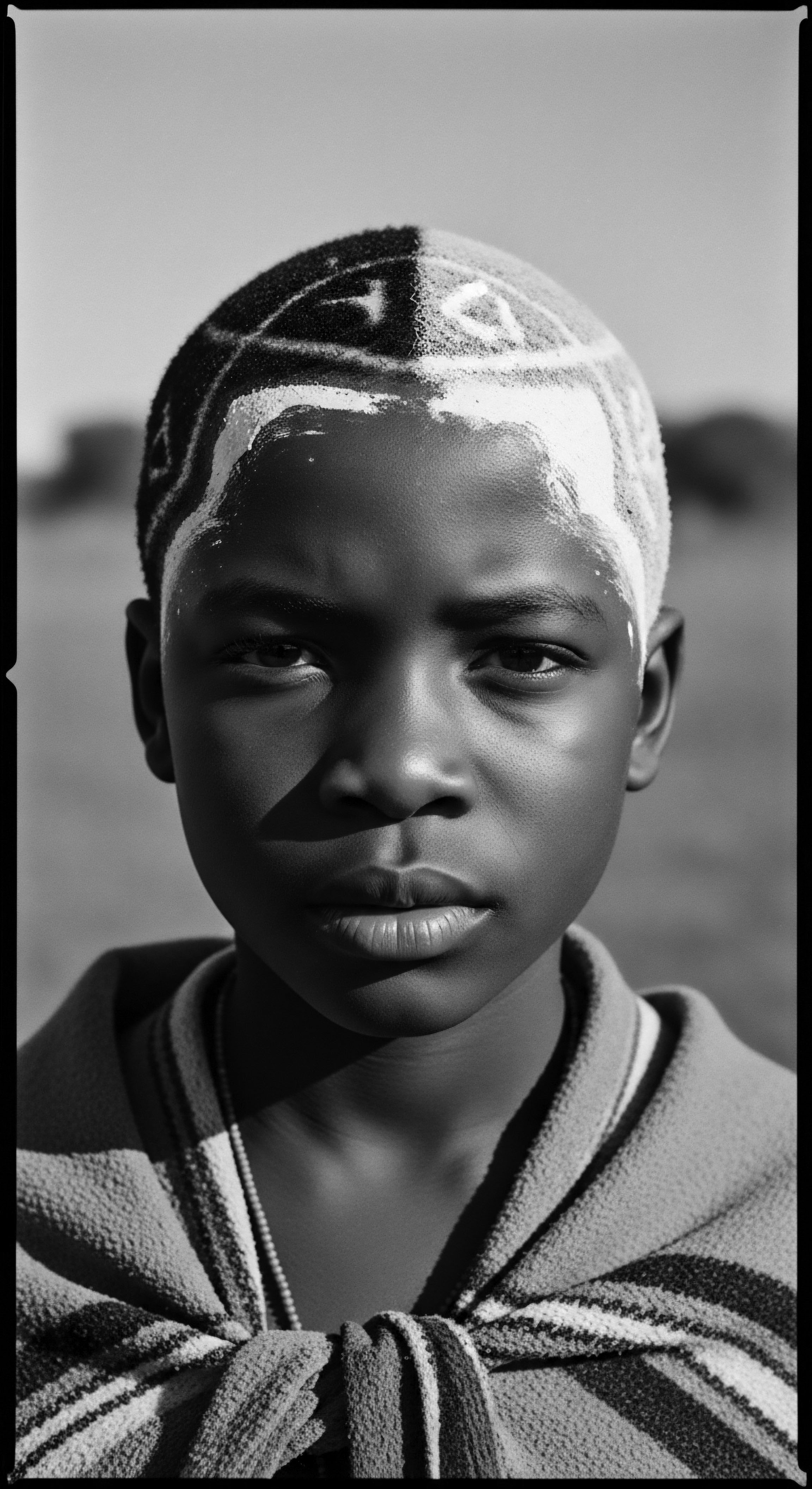
The Reclamation of Identity ❉ A Collective Stance
The mid-20th century saw a significant shift in attitudes within Black communities, with the rise of the Natural Hair Movement. This was a profound example of Community Influence at work, actively challenging and reshaping norms that had been externally imposed. Natural, textured hair became a potent symbol of resistance against the erasure of Black culture and a powerful statement against centuries of racial injustice. The Afro, in particular, arose as a symbol of Black agitation, not merely a style, but a form of protest against forced assimilation.
This collective embrace of natural textures allowed Black communities to redefine beauty on their own terms, fostering pride and self-acceptance. Professor Shannon Johnson, a fashion studies scholar, notes the impact African hair has had on Black and African American communities globally. This period marked a powerful collective assertion of identity, demonstrating how community influence can drive significant social change, allowing individuals to reclaim their inherent beauty and ancestral legacy. The spirit of this movement lives on, extending its reach through contemporary platforms where individuals connect over shared hair journeys, seeking to affirm their identity and celebrate their unique heritage without external validation.
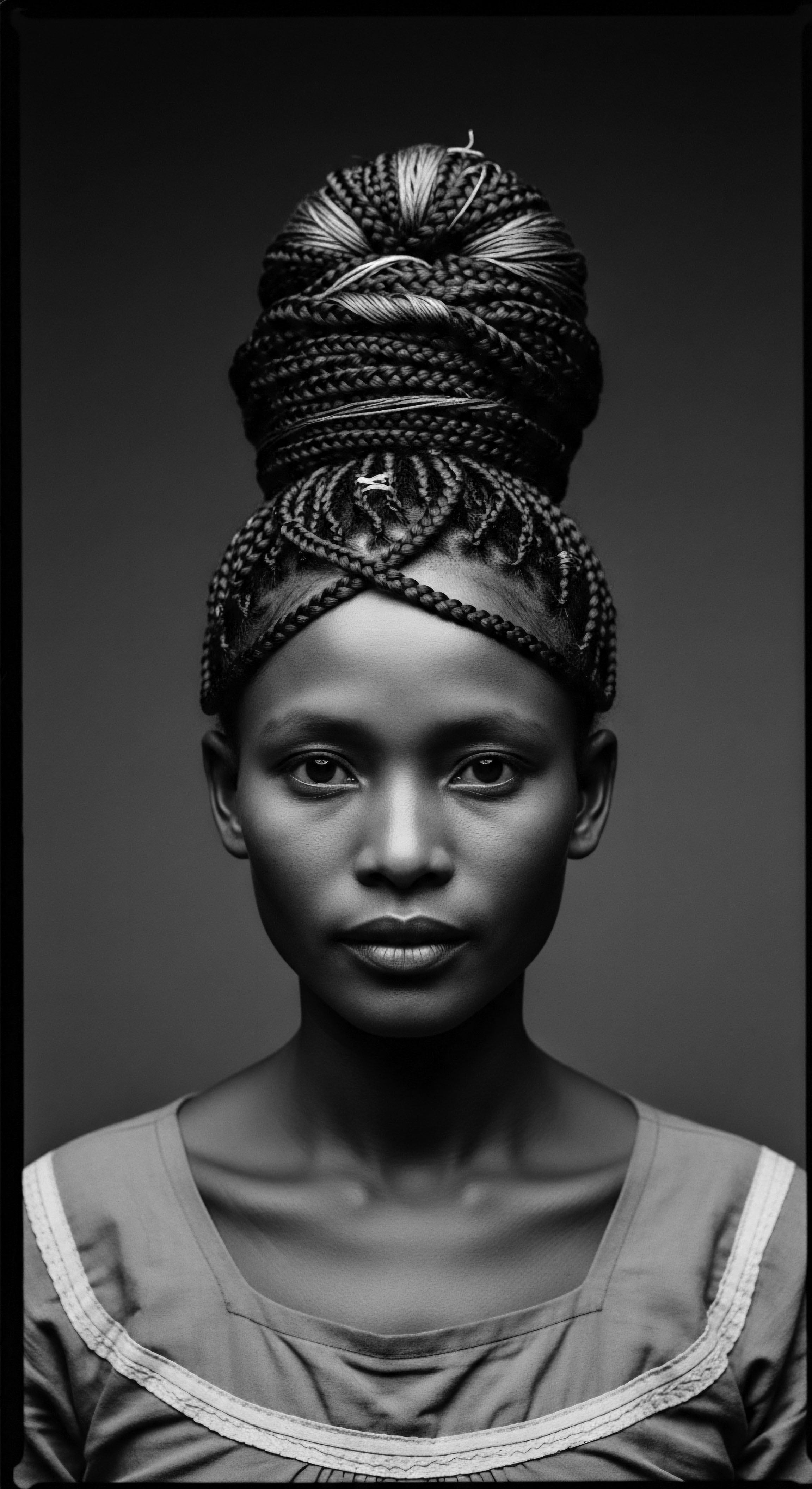
Academic
Community Influence, from an academic vantage point, represents a complex, deeply embedded socio-cultural phenomenon wherein collective entities assert demonstrable power to shape the trajectories of individual and societal development. This holds particular relevance for values, norms, and practices intrinsically tied to heritage, cultural preservation, and identity. This definition moves beyond a simplistic view of influence as a unidirectional persuasion; it recognizes an intricate, reciprocal, and iterative process, perpetually negotiated and embedded within broader societal structures and intricate power dynamics. Scholars in social psychology, sociology, and cultural anthropology provide a robust theoretical foundation for this understanding.
Social Network Theory highlights communities as interconnected matrices where influence diffuses through relationships and myriad interactions. Social Cognitive Theory underscores the role of observational learning and modeling within communal settings, where individuals adopt behaviors they witness enacted and reinforced by others. Cultural Anthropology, in its turn, illuminates how shared cultural norms, ancestral values, and deeply held belief systems within a collective dramatically sculpt both individual and collective approaches to self-presentation and cultural continuity. Thus, the meaning of Community Influence, at this academic tier, is rooted in its capacity to instantiate and transmit cultural knowledge, reinforce collective identity, and catalyze social transformation, especially poignant within historically marginalized groups.
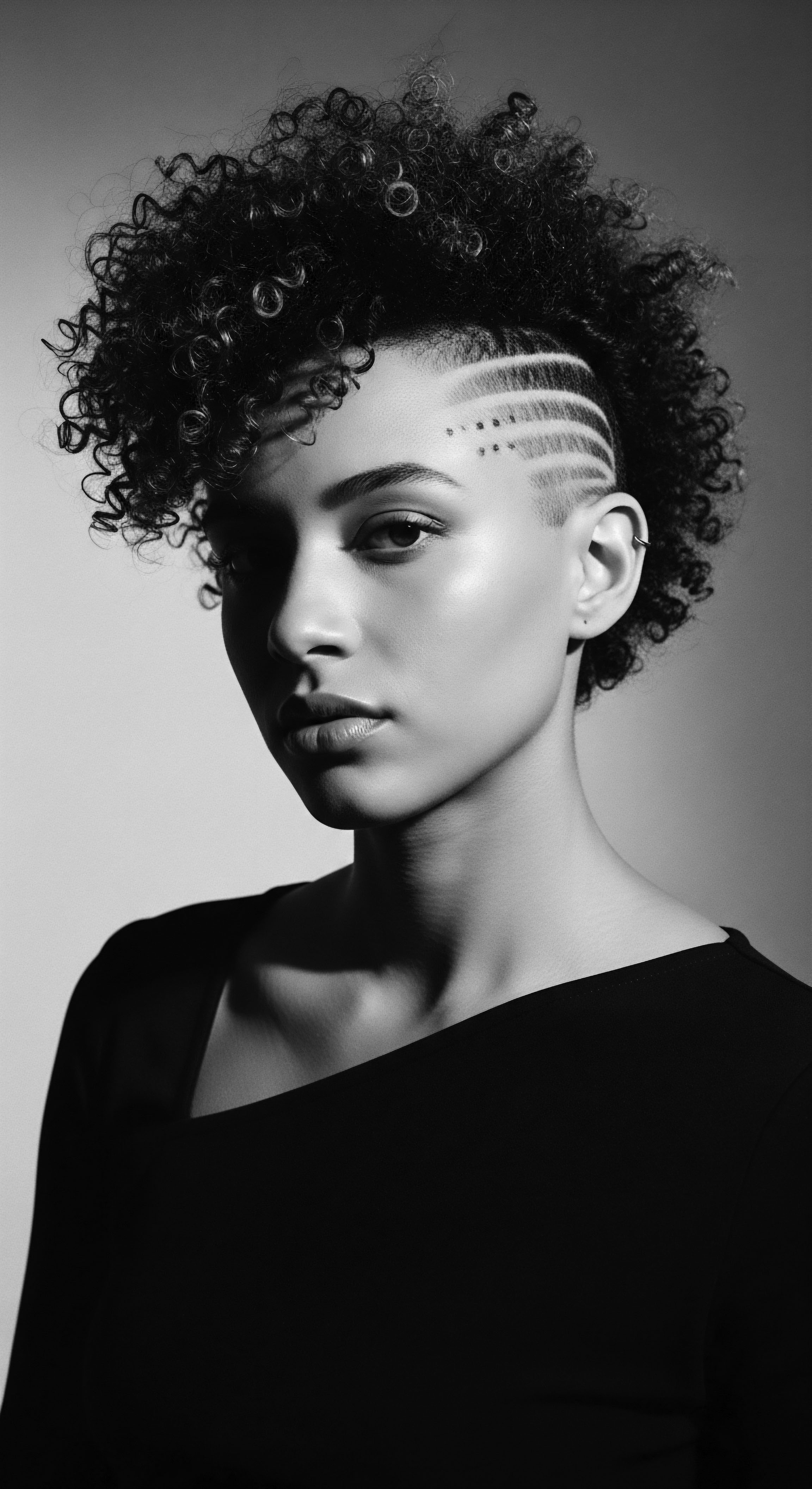
Echoes from the Source ❉ Hair as an Ancestral Archive
The examination of Community Influence within the context of textured hair must begin with an acknowledgement of its pre-colonial origins. In ancient African societies, hair was an eloquent, symbolic tool, communicating a wealth of information about a person’s social status, heritage, spiritual beliefs, tribe, and marital status. This was a visual language, where intricate styles acted as maps of identity, connecting individuals to their lineage and community. For example, the Wolof culture of Senegal utilized partially shaved heads on young girls to signify their unavailability for courtship, a communal understanding embedded in the very presentation of their hair.
This collective grammar of hair ensured that knowledge was not merely transmitted but lived, embodied, and understood through shared cultural practices. The absence of a written language in many early African societies meant that hair became a significant medium for communication, carrying profound societal and spiritual meanings. The very act of hair grooming was often a communal affair, reinforcing social bonds and transmitting cultural wisdom.
The advent of the transatlantic slave trade profoundly disrupted these intricate systems of communal hair signification. The forced shaving of captives’ heads upon arrival was a deliberate act of dehumanization, designed to strip individuals of their identity, cultural ties, and ancestral memory. This traumatic rupture, however, did not erase the enduring influence of community. Instead, it shifted the modality of influence, transforming overt cultural expression into covert acts of resistance and silent assertions of identity.
Enslaved African women, particularly rice farmers, braided rice seeds into their hair as a hidden means of survival and a profound act of preserving the culture of their homeland, carrying their heritage literally upon their heads. Cornrows also served as a clandestine method for creating maps to escape plantations, transforming a hairstyle into a complex navigational tool within a community striving for liberation. This is a powerful demonstration of Community Influence, where shared, often unspoken, knowledge transformed hair into a vessel of resistance, illustrating the ingenuity of collective action in the face of immense oppression.
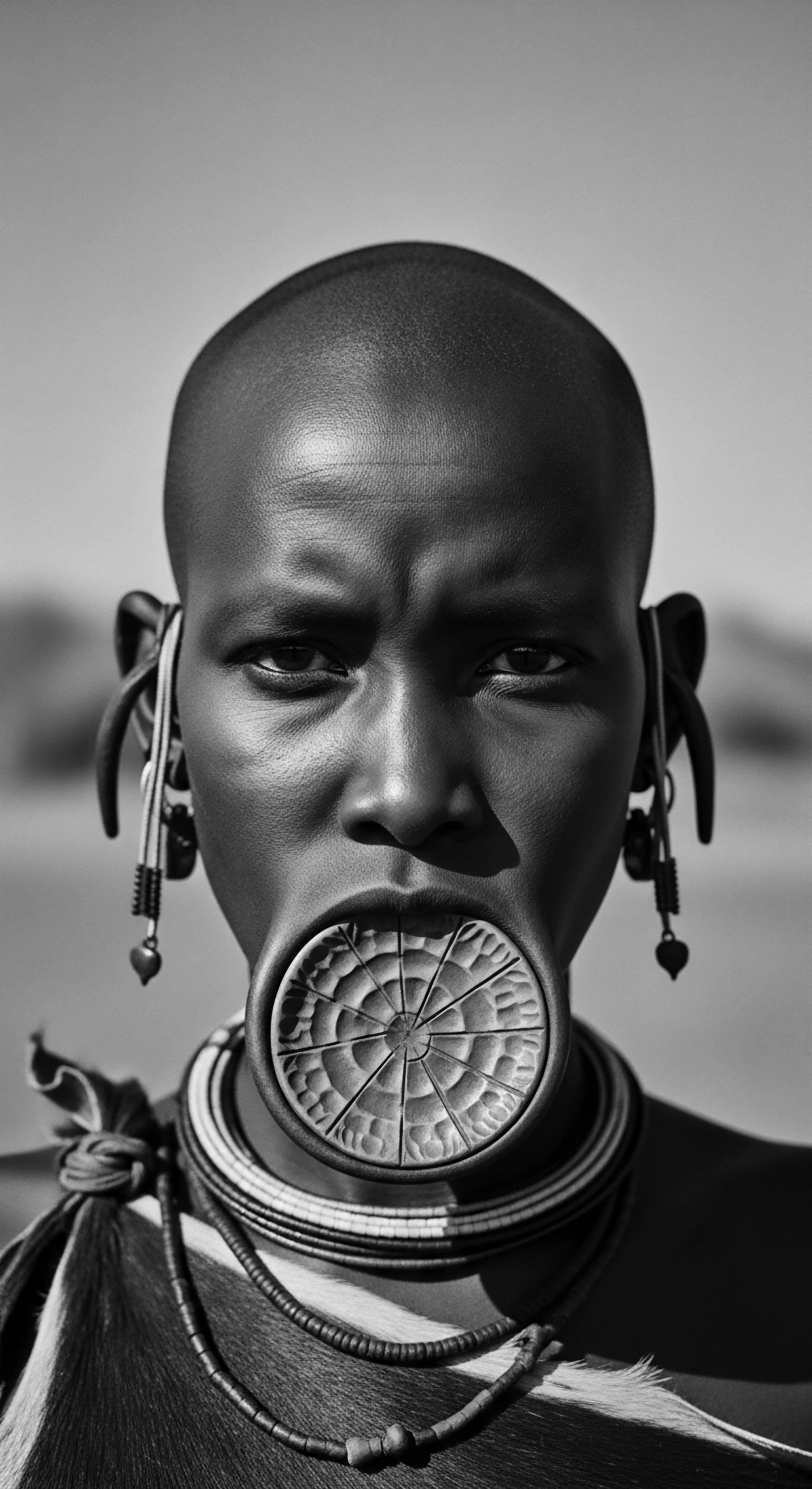
The Tender Thread ❉ Hair as a Conduit for Community Care and Knowledge
The legacy of these ancestral practices persisted through the arduous journey of the diaspora, finding new expressions within the confines and complexities of new worlds. The evolution of hair care within Black and mixed-race communities became deeply intertwined with acts of communal care. The scarcity of traditional ingredients and tools in foreign lands necessitated adaptation, yet the communal spirit remained. The Black beauty salon and barbershop emerged as central pillars of this evolving communal influence, serving as vital cultural touchstones and safe havens.
These spaces were not merely commercial establishments; they became vibrant civic hubs, sites for political discourse, economic empowerment, and communal healing. In these environments, stylists and barbers functioned as more than service providers; they became confidantes, advisors, and cultural historians, listening to narratives of struggle and triumph, thereby safeguarding the collective wisdom of the community. This reciprocal relationship between care provider and community member solidified hair practices as deeply social, rather than purely individual, endeavors.
The practice of communal hair sessions, often held in homes, courtyards, or even under village trees in West Africa, served as informal schools where younger women learned grooming skills and the secrets of womanhood from their elders. This foundational aspect of Community Influence persists in the Black beauty salon, which functions as a modern iteration of this ancestral gathering place. The experience of a young person accompanying an elder to the salon, immersed in the sounds, scents, and conversations, is a deeply formative one. It is a space where stories are exchanged, relationships are forged, and laughter echoes, fostering a profound sense of belonging.
These interactions are where cultural norms are gently reinforced, where aesthetic preferences are collectively shaped, and where the resilience of Black beauty is celebrated without reservation. The significance of hair in the Black community has been ingrained from birth, passed down through cultural attributions and ethnic identity.
Indeed, research on Black women’s experiences with alopecia highlights the deeply ingrained significance of hair within the Black community, attributing this to cultural influences and ethnic identity. The study by Williams, De Leon, and Maharaj (2025) underscores how hair is inextricably linked to personal and collective identity for Black women, showing how hair-based stigma can affect mental well-being and how styles are viewed as a symbol of community, pride, and resistance. This research reveals that the inability to partake in common hairstyles due to conditions like alopecia can lead to feelings of cultural disconnection, as these styles are so closely associated with communal belonging.
This specific example illustrates the profound interplay between individual hair experiences and the overarching Community Influence; the collective definition of beauty and identity creates a social landscape where deviations from communal norms can impact self-perception and mental health. This further compels the need for social support and culturally informed approaches to wellness, acknowledging the singular experiences of Black women in navigating hair loss.

The Unbound Helix ❉ Voicing Identity and Shaping Futures
The academic perspective on Community Influence extends to its role in articulating identity and shaping future trajectories, particularly through movements of resistance and reclamation. The “Black is Beautiful” movement and the associated embrace of natural hair, such as the Afro, in the 1960s and 1970s, serve as a potent case study of Community Influence catalyzing widespread social change. This was a collective declaration, a profound political statement that rejected Eurocentric beauty standards and asserted African heritage. The widespread adoption of these styles was not merely a trend; it signified a communal shift in self-perception and a unified stance against oppression.
Icons of the Civil Rights and Black Power movements, such as Angela Davis and members of the Black Panther Party, wore their natural hair as visible manifestations of this collective defiance. Their choices, amplified by shared purpose, radiated outward, influencing countless individuals to find strength and pride in their natural texture. This period exemplifies how collective behavior, driven by shared sentiments and a common purpose, can lead to significant societal transformation.
The persistence of hair discrimination, even in contemporary settings, further highlights the enduring power of historical Community Influence and the continued necessity for collective action. Laws such as the CROWN Act, which prohibits discrimination based on hair texture or protective hairstyles, emerged directly from communal advocacy and the collective demand for equity. These legislative victories are testament to the cumulative influence of sustained community effort, transforming cultural norms into legal protections. The conversation around hair in Black communities continues to evolve, reflecting an ongoing process of defining beauty and identity, often through the lens of individual choice tempered by communal history and shared aspirations.
The current Natural Hair Movement, propelled by digital platforms, extends this conversation globally, enabling a broader community influence that transcends geographical boundaries and fosters a worldwide celebration of textured hair heritage. This digital connectedness allows for a rapid spread of ideas, emotions, and behaviors, creating a modern form of social contagion that reinforces self-acceptance and challenges antiquated beauty ideals.
Academic inquiry into the phenomenon of diasporic transindividuation provides further depth to understanding Community Influence. Océane Nyela’s thesis (2021) describes this concept as the externalization of the collective memory of the Black diaspora through cultural practices and techniques, specifically including hair braiding. This framework illuminates how hair braiding serves as a communicative and technological practice that sustains and cultivates diasporic identities. Sybille Rosado’s work (2003) speaks to the “grammar of hair,” its communicative abilities allowing women of African descent to connect and communicate, countering the separation imposed by historical forces.
This academic lens affirms that decisions about hair are imbued with meanings beyond aesthetics, reflecting a shared language and a collective historical consciousness. The study of cultural production, such as literature that uses hair as a central trope, further reveals how diasporic identities are continually negotiated and expressed through the materiality of hair. The protagonist in Djaimilia Pereira de Almeida’s novel, Esse Cabelo, for instance, navigates her Angolan and Portuguese identities through her curly hair, showcasing how hair can be a metaphor for the African diaspora’s influence on life and identity. This demonstrates how collective experiences shape personal narratives, making hair an identity marker within diverse communities.
- Colonial Erasure and Resistance ❉ The practice of forcibly shaving enslaved Africans’ hair was a deliberate attempt to sever their ties to ancestral identity, yet communities found ways to preserve traditions through covert styles like rice seeds braided into hair for survival.
- Hair as Social Commentary ❉ In the 1960s and 70s, the Afro became a powerful political statement, reflecting collective dissatisfaction with Eurocentric beauty standards and a proud assertion of Black identity during the Civil Rights Movement.
- Contemporary Advocacy ❉ The CROWN Act, a modern legislative response, stands as a testament to sustained community influence, pushing for legal protections against hair discrimination and affirming the right to express natural hair textures freely.
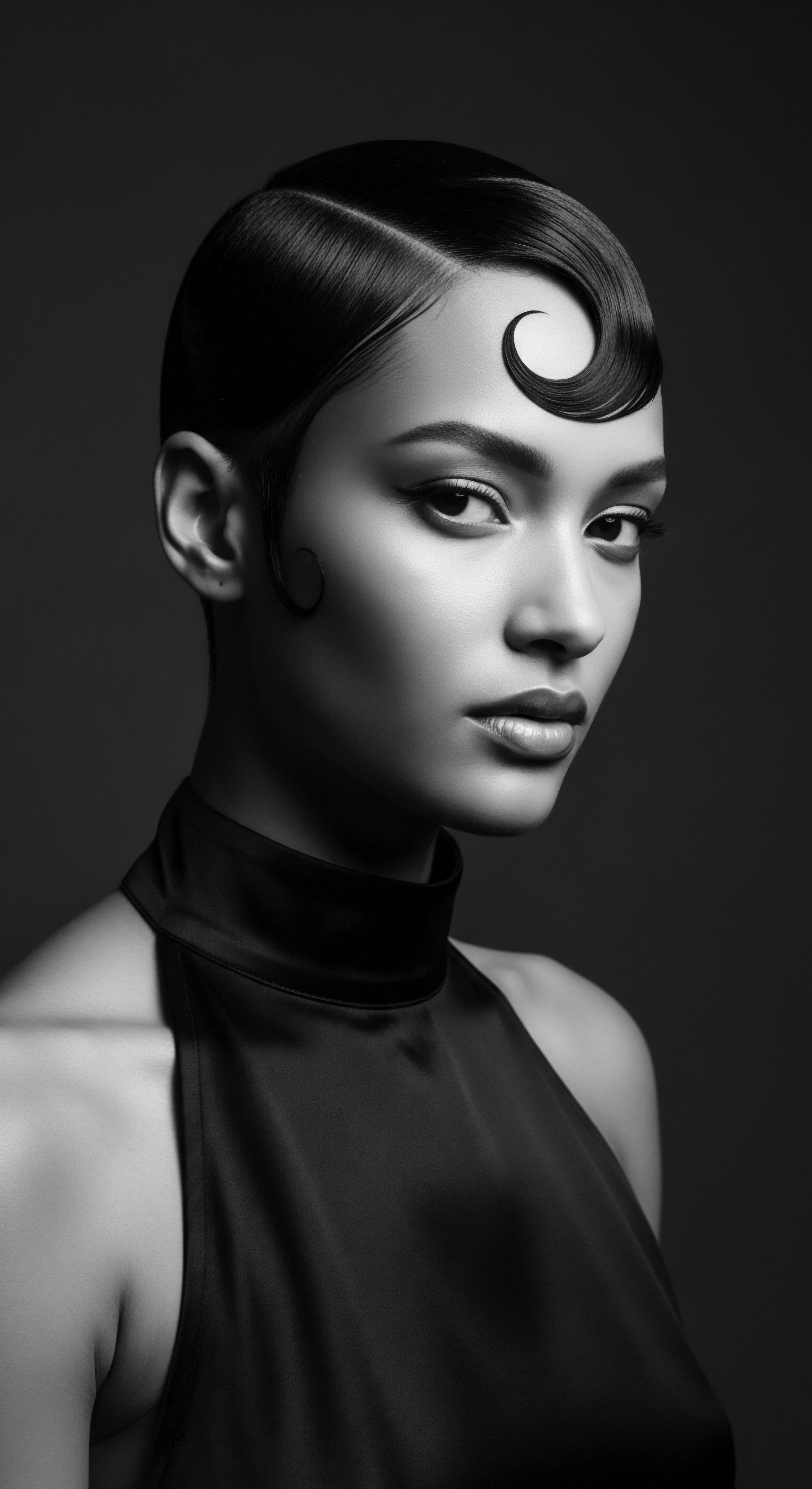
Reflection on the Heritage of Community Influence
The journey through the meaning of Community Influence, particularly as it entwines with the heritage of textured hair, concludes not with a definitive end, but with an open-ended understanding of its enduring presence. From the ancient African villages where hair communicated one’s very place in the cosmos, to the defiant assertions of identity in the diaspora, and onward to the global digital conversations of today, the thread of collective wisdom has remained unbroken. This profound connection to hair’s ancestral story, its journey from elemental biology to a vibrant expression of cultural legacy, continually reminds us that hair is more than a collection of strands; it is a living, breathing archive of identity, resistance, and communal love.
The wisdom passed through generations, sometimes through covert acts of survival, sometimes through joyous communal gatherings, forms the very soul of a strand, carrying with it the echoes of countless hands that have cared for, styled, and honored textured hair. Our understanding of Community Influence thus prompts a reverence for the past, an appreciation for the present, and a hopeful gaze toward a future where every texture is celebrated as a testament to a rich and resilient heritage.

References
- C+R. (2024, December 3). The Connection Between Hair and Identity in Black Culture. C+R Research.
- Nyela, O. (2021). Braided Archives ❉ Black hair as a site of diasporic transindividuation (Thesis). York University.
- The Queen’s Journal. (2025, February 7). History, identity, and community ❉ The significance of Black hair.
- The Gale Review. (2021, November 23). African Hairstyles – The “Dreaded” Colonial Legacy.
- The Kurl Kitchen. (2024, November 5). The Cultural Significance Of Natural Hair In Different Communities.
- King, V. & Niabaly, D. (2013). The Politics of Black Women’s Hair. Cornerstone ❉ A Collection of Scholarly and Creative Works for Minnesota State University, Mankato, 13(4).
- BLAM UK CIC. (2022, September 15). The history of Black Hair.
- Afriklens. (2024, November 1). African Hairstyles ❉ Cultural Significance and Legacy.
- EdwardAsare. (2021, April 17). THE ROLE OF HAIR IN ANCIENT AFRICAN CULTURES.
- CBC Radio. (2021, January 28). Tangled Roots ❉ Decoding the history of Black Hair.
- Folklife Magazine. (2022, November 7). It’s More Than “Just” Hair ❉ Revitalization of Black Identity.
- Haisch, L. (n.d.). Hair It Is ❉ Examining the Experiences of Black Women with Natural Hair.
- Maharaj, C. (2025, May 15). Beyond the roots ❉ exploring the link between black hair and mental health. Research.
- Williams, K. L. De Leon, M. & Maharaj, C. (2025). “Hair is your crown and glory” – Black women’s experiences of living with alopecia and the role of social support. Journal of Health Psychology.
- National Museum of African American History & Culture. (n.d.). The Community Roles of the Barber Shop and Beauty Salon.
- Lifestyle Sustainability Directory. (2025, March 29). Community Influence → Term – Lifestyle → Sustainability Directory.
- Almeida, D. P. de. (2020). Esse Cabelo ❉ a tragicomédia de uma cabelo crespo que cruza fronteiras (E. M. B. Becker, Trans.). Taylor & Francis eBooks.
- Colleen. (2023, June 21). Hair as a Symbol of Activism.
- Battiston, F. Brigatti, E. & Caldarelli, G. (2018). Social Influence and the Collective Dynamics of Opinion Formation. Frontiers in Physics, 6.
- Advertising Week. (2024, October 14). Black Barbershops and Salons ❉ The Custodians of Culture.
- C+R. (2024, September 13). Hair and Beauty ❉ Celebrating Individuality Within the Black Community.
- Igba, E. (2022). Hair as a Form of Resistance in Chimamanda Ngozi Adichie’s Americanah.
- African American Museum of Iowa. (n.d.). History of Hair.
- The Garfield Messenger. (2022, February 28). The Significance of Black Hair.
- Chicago Shakespeare Theater. (n.d.). Hair Story / History / Here Story.
- Sociology Group. (2024, March 12). Understanding Community Power in Sociology.
- Peculiar Perfection. (2023, December 4). Deeper Than Hair ❉ A Journey Through Black Women’s Hair History.
- More Than Makeovers. (2024, July 20). More Than Makeovers ❉ How African Salons have shaped Communities for Generations.
- Fashion Sustainability Directory. (2025, March 27). Community Influence → Term – Fashion → Sustainability Directory.
- Britannica. (n.d.). Collective behavior | Definition, Types, Theories, Examples, Characteristics, & Facts.
- Okan Africa Blog. (2020, October 8). The significance of hair in African culture.
- El-Ateek, S. A. (n.d.). Braiding African Identities ❉ Diaspoetic Reading of Black Women in Chimamanda Adichie’s Americanah (2013).
- The Resilient Tresses. (2024, March 1). The Resilient Tresses ❉ West African Black Hair History from the 1400s to Today.
- Rupkatha Journal. (n.d.). Manifestations of Displacement, Difference, and Belongingness through Hair in Chimamanda Ngozi Adichie’s Americanah.
- Psychology Town. (2024, September 28). Understanding Collective Behaviour ❉ Beyond the Crowd.
- Psychology, C. (n.d.). Collective Behavior ❉ Psychology Definition, History & Examples.
- Wikipedia. (n.d.). Community.
- Seychelles Nation. (2022, May 21). The connection between hair and identity -Seychelles Nation.
- Mendoza, A. (2023). Colombian Diasporic Identities ❉ Representations in Literature, Film, Theater and Art. Taylor & Francis eBooks.
- The Courier. (2021, November 22). The Importance and Influence of Black Hair Identity.
- McMillan, D. W. (2024, September 7). Sense of Community ❉ A Definition and Theory. Dr. David McMillan.
- Ari Party Hair. (2025, February 18). The History and Symbolism of Hair Wrapping Across the African Diaspora.
- Castelli, L. & Panno, A. (2021). Computational Models of Social Influence And Collective Behavior. In The Oxford Handbook of Social Psychology and Social Neuroscience. Oxford University Press.
- Joseph, S. (2016). The Impact of Hair on African American Women’s Collective Identity Formation . ResearchGate.
